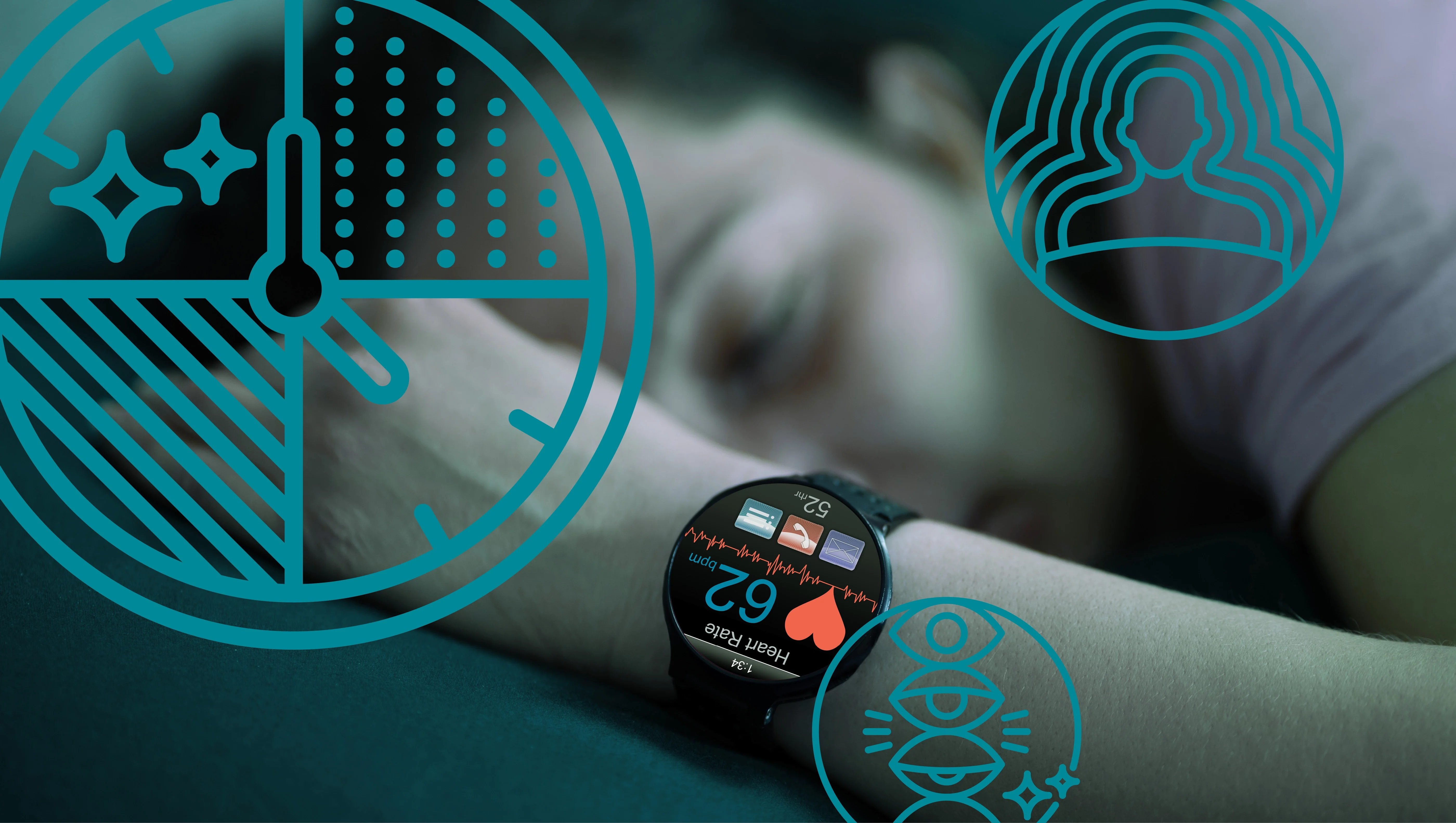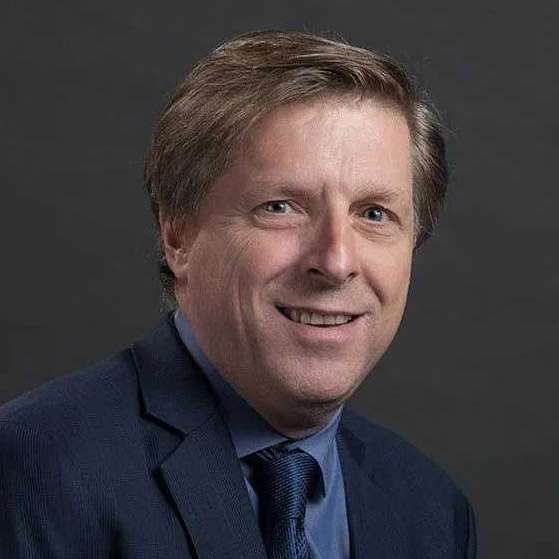A healthy diet, regular exercise and good sleep are frequently touted as the foundations of a long and healthy life. But while there is now extensive scientific evidence for the effects of the first two practices, few studies have investigated the connections between sleep and longevity. That is striking, because sleep is the body’s natural process for restoration and repair. We intuitively know that a good night’s sleep makes us feel better — yet modern life is constantly pushing us to reduce the third of our lives that it takes up, and what sleep we get may be of variable quality.
The price of such attrition is significant. It is already well established that poor sleep in humans is associated with a shorter lifespan caused by a plethora of health conditions such as cardiovascular disease, diabetes and dementia, as well as higher all-cause mortality risk. And thanks to our increasingly sophisticated understanding of sleep’s effects, there are opportunities to augment it to protect or even improve health. These include behaviour change, environmental modification, pharmacology and neurotechnology.
Yet fundamental questions remain to be answered about the interface between sleep and ageing:
- What counts as “good sleep”, and does it vary from person to person?
- Does poor sleep cause ageing, or does ageing cause poor sleep – or both?
- How can we accurately measure both sleep and ageing at scale?
- Can we use science and technology to optimise the effectiveness of sleep?
Answering these questions could unlock a powerful new tool for public health. While medical advances have led to significant increases in global life expectancy, the number of years that people spend in ill health at the end of their lives has remained stubbornly constant. Demographically speaking, therefore, most societies are ageing rapidly, with increasing numbers of older people becoming medically intensive, socially dependent and economically unproductive. Addressing the impacts of this demographic change is becoming a priority for policy-makers. Sleep augmentation could be one vital tool in closing the gap between lifespan and “healthspan”.
First, though, sleep and longevity researchers must elaborate the evidence of the links between their fields. Tools for diagnosing and treating sleep problems need to be made more scalable. And scientists, ethicists, policy-makers and civil society need to come together to consider the ethical implications of augmenting sleep, including the implications of uneven access to good sleep and the possibility of coercive measures to enforce sleep.
Key opportunities
Define “good” sleep
Despite decades of research and growing understanding of the processes that underlie sleep, the field has struggled to agree the hallmarks of good sleep. This is partly because sleep is a complex and multifaceted phenomenon driven by both biological and psychosocial imperatives. People also have varied sleep requirements and sleep styles, influenced by both genetic and socio-cultural factors. Nonetheless, establishing what good sleep looks like for different groups of people will be a crucial first step in developing ways to augment sleep for healthspan extension.
Link sleep and ageing
While it is clear that sleep and health are related (for instance, the established correlation of sleep and longevity), the interaction with the underlying processes of ageing is not well understood. Poor sleep has been associated with many age-related diseases, suggesting it plays a broader systemic role. But elaborating the objective and quantitative evidence of this connection will be crucial in convincing healthcare providers, pharmaceutical companies and policy-makers that augmenting sleep could boost healthspan. Longevity researchers have identified various biomarkers which indicate a patient’s “biological age” (as distinct from their chronological age), which could play a crucial role in determining the impact of different sleep interventions on longevity.
Prioritise good sleeping
It is estimated that a third of adults in high-income countries do not get enough sleep. While the causes are varied, many of the biggest contributors relate to lifestyle choices and environmental factors. Consider that the simple need for an alarm clock, for example, is itself evidence of impaired sleep.
This suggests that significant gains can be made through interventions that encourage better sleep habits, such as creating more sleep-friendly cities (for example, by reducing light and noise pollution), decreasing the adverse impacts of indoor lighting on circadian rhythms and adjusting work and education schedules to promote better sleep. This speaks to the emerging principle of sleep as a universal human right – which highlights the problematic lack of data on sleep habits in lower-income countries. It is likely that sleep deficiencies are also prevalent in these societies, but they may have different causes and effects.
Engineer better sleep
We may also be able to intervene to improve sleep more directly, initially in the treatment of people who suffer from established sleep disorders. Advances in neurotechnology, pharmacology and “digital therapeutics” could dramatically improve their diagnosis and management, potentially facilitating personalised and more effective treatments. But as our understanding improves it may become possible to enhance sleep. Rather than simply being restorative, enhanced sleep could boost mental performance and turbocharge the body’s regenerative capacities. Alternatively, it might convey the same health benefits in a shorter amount of time, reducing the amount of time people need to spend in bed. However, such developments would introduce thorny ethical questions around unequal access and competitive advantage that will require careful consideration.
Sleep and health
Modern sleep research began with the discovery of rapid eye movement (REM) sleep in 1953.1 Prior to this, sleep had been thought of as a largely passive state, but the REM breakthrough led to the realisation that our brains cycle between different stages of sleep, each characterised by a distinct pattern of neuronal activity. This era also saw significant advances in our understanding of the body’s circadian clock, which regulates the timing of our sleep-wake cycles.2
Today, our understanding of sleep is considerably more sophisticated. Rather than proceeding in a series of orderly stages, sleep is now understood to be a multidimensional phenomenon that unfolds over a spectrum of states between consciousness and unconsciousness. And while sleep research has traditionally focussed on the brain, there is growing recognition that sleep influences a raft of important biological systems, including metabolism, DNA repair and the gut microbiome.3
The links between sleep and health are well established. Sleep plays a crucial role in memory formation, brain plasticity, the clearance of waste products from the brain, the function of the immune system and cardiovascular health. In the short term, sleep deprivation impairs cognitive performance and can lead to various mental-health problems, while in the long term it is associated with increased incidence of cardiovascular disease, diabetes, weight gain, dementia and certain cancers.4,5 Lack of sleep has consistently been linked with higher risk of all-cause mortality.6
Unfortunately, sleep deprivation is endemic in much of the world. Up to a third of US adults, for example, do not get sufficient sleep.7 Often this is the result of a mismatch between socially enforced schedules for sleeping and waking, and the patterns established by circadian clocks. These circadian “chronotypes” depend on age, genetics and the lighting environment, and can differ significantly from person to person,8 but such individual variation is seldom properly accommodated by the requirements of modern life and work. The resulting deprivation has been termed “social jetlag” — the effects arising from lack of sleep of the necessary quality and duration.
There is growing recognition that improving sleep quality could have enormous health benefits, but acting on this raises numerous challenges. For a start, the field has struggled to coalesce on a universal definition of “good sleep”.9 While there is general consensus that it is detrimental to take a long time to fall asleep, or to have fragmented or highly disrupted sleep, it is less clear what constitutes the optimal composition of sleep. The ideal duration and distribution of specific sleep stages, as well as the quantity and quality of underlying brain wave oscillations during these stages, remains insufficiently understood. A lack of strong theories of sleep limits most studies to drawing correlations between sleep and health rather than establishing causal relationships. And recommendations are often biased towards Western sleep patterns despite well-known regional and cultural variations.10
Robust data provides the foundation for biomedical research but is lacking when it comes to sleep. Part of the problem is that much of the data used by researchers is derived from participant self-reports, which can lead to significant overestimates of sleep duration and thus to disagreements with objective data collected during sleep studies, particularly around the health impacts of longer sleep durations.11,12 Sharing objective sleep data between groups has proven challenging due to a lack of common formats, ethical considerations around sensitive health information and the sheer quantities of raw data recorded during sleep studies. Wearable technologies like smart watches could help collect more objective data “in the wild”, but they capture a more limited suite of sleep metrics than gold-standard approaches, such as monitoring patients overnight in a laboratory and collecting data on brain activity, eye movement, muscle activity, heart rate and breathing.
The complex and multifaceted nature of sleep means that achieving truly universal definitions and recommendations for good sleep may ultimately be impossible. But it should be possible to reach a broad working consensus in key areas, and given the well-established links between sleep and disease, and the widespread prevalence of bad sleep, there is considerable scope for sleep interventions to drastically improve health at both the individual and societal levels.
5 years
The development of standardised formats for sleep data, and a common platform for sharing it, allows the large-scale analysis of sleep data from both animals and humans. Massive datasets enable studies of sleep’s relationship to various health parameters that were previously infeasible.
Breakthroughs in wearable technology enable continuous monitoring of brain activity and other key biological signatures, providing new insights into sleep patterns and their relationship to health. Sleep researchers work with the technology industry to agree standards for wearable health monitoring.
Researchers identify biomarkers as part of hallmarks of sleep that can reliably determine someone’s chronotype rather than having to rely on self-reported or observational measures.
10 years
Sleep researchers identify the key parameters required for sleep that is optimal for good health, thus establishing a widely accepted definition of “good sleep”.
Development of strong theories of sleep give rise to new hypotheses about its connections to health, helping to guide more effective data collection.
Establishment of well-defined “somnotypes”, which describe the combination of a patient’s chronotype, sleep timing, sleep duration and sleep structure.
A better understanding of the molecular and behavioural processes that govern how people’s circadian rhythms synchronise with their environment.
25 years
Sleep is designated as a human right due to growing appreciation of its role in health. Promoting better sleep becomes an integral part of the policy-making process in all areas of governance.
Greater awareness of the benefits of sleep and the development of a broad suite of sleep interventions leads to massive improvements in global health. Rates of drug abuse, mental health issues and developmental issues plummet.
Sleep and longevity
The emerging field of longevity medicine seeks to rewrite our understanding of ageing. Rather than viewing the process as an inevitable and immutable part of life, proponents approach ageing as a treatable condition.
The discipline builds on breakthroughs in the biology of ageing in the late 20th century. These identified key mechanisms that drive the process, including cellular senescence, oxidative stress and critical intracellular signalling pathways.13 The discovery of interventions that can target these processes, such as time-restricted feeding and drugs like metformin and rapamycin, demonstrated the theoretical feasibility of slowing ageing. Today, a growing number of longevity clinics offer a wide range of interventions designed to boost healthspan, including nutrition plans, supplements, hormone therapies and even stem-cell treatments.
Sleep has remained comparatively understudied during this evolution, despite being considered one of the hallmarks of healthy ageing. This is to the detriment of both fields – denying longevity medicine a potentially powerful avenue for intervention and sleep researchers a new lens for understanding sleep’s impact on health. Elucidating the connections between these two disciplines will be difficult, however, as they both deal with phenomena that are hard to define and present as complex assemblages of biomarkers.
It is well established that as people age they tend to sleep less at night, experiencing more frequent disturbances14 and changes in the macro- and micro-structure of sleep, but it is not yet clear whether this is simply a marker of advancing age, or if worsening sleep actually contributes to the ageing process. People whose sleep patterns are typical of those who are chronologically older than them are at higher risk of age-related diseases, providing tentative evidence that age-related sleep deterioration accelerates ageing, although further research will be required to establish causality. And sleep deterioration is often the result of illness or other unhealthy behaviours such as lack of exercise or alcohol consumption, making it difficult to tease out the influence of sleep on ageing.
One promising avenue is to compare patients’ sleep data against readouts from “ageing clocks” — computational models developed by longevity researchers that analyse a collection of biomarkers to measure biological age, independently of chronological age. This could help establish how different sleep patterns affect the rates at which people age. However, several different clocks have been developed, each focussing on different collections of biomarkers, including clinical metrics, gene expression, epigenetic changes, protein levels, metabolism, immune function and even facial features.15,16 There is often little overlap between their predictions, and many suffer from low reproducibility, raising concerns about how reliably they actually reflect biological age. There are also a growing number of organ-specific ageing clocks, designed to predict the onset of specific diseases.17 As such, studies measuring the impact of sleep on ageing need to test against a broad panel of different clocks.
Deciding which sleep metrics to use also presents challenges. The gold standard for sleep research is polysomnography, which involves monitoring patients overnight in a laboratory and collecting data on brain activity, eye movement, muscle activity, heart rate and breathing. Novel avenues for measuring autonomic nervous system activity and arousal, such as pupil monitoring, are emerging, providing simpler ways to collect sleep data.18 But most such studies remain expensive and time-consuming, making it hard to collect enough data to draw meaningful statistical conclusions in comparative studies. There are also concerns that contrived laboratory conditions result in unnatural sleep and thus to unrepresentative data.
Wearable technologies present an opportunity to collect sleep data at greater scale and in more natural settings. But it’s unclear if the metrics collected by smart watches and smart rings — typically including movement, heart rate and oxygen saturation — provide sufficient resolution to capture a true picture of sleep patterns.19 A significant problem is the fact that sleep has traditionally been defined by changes in brain activity, which is not directly measured by wearables. Differences in dynamics and timescales make it hard to draw correlations between these different metrics, and making progress may require new definitions of sleep that are less brain-centric. New approaches may again help: for example, wireless brain-monitoring devices show promise as a way to provide accurate sleep data in more natural settings.20
There is also a wealth of animal data in both sleep and longevity research that could be used to tease out linkages between some of the fundamental molecular mechanisms underlying both processes. However, caution is needed because it is not clear how easily findings can be translated to human contexts. For instance, mice are a popular model organism, but their sleep durations normally increase as they get older — the reverse of the typical human pattern.
Despite these challenges, the sheer quantity of sleep data that has already been collected by researchers presents an opportunity in itself. Creating a common data platform where sleep researchers can share their results could enable studies on a scale far beyond the resources of any individual group. Efforts are under way to create such platforms, but it will take considerable work to establish common formats for data and to deal with the ethical and regulatory challenges of sharing it, as well as how to support, maintain and update these platforms on a sustainable basis.
5 years
Better understanding of the bidirectional links between sleep and age make it possible for longevity researchers to use sleep patterns to assess a patient’s biological age.
More powerful non-linear computational approaches enable the development of increasingly sophisticated ageing clocks that capture ever-greater collections of biomarkers.
Wearable technology combined with AI provides personalised longevity monitoring and predictions about health trajectories.
10 years
Reliable, compact, wireless brain-monitoring devices go mainstream, enabling continuous monitoring of a host of brain-health metrics relevant to longevity and sleep.
Highly sophisticated ageing clocks provide reliable predictions of health and longevity up to 20 years into the future that can guide patient decisions. This also makes it possible to do smaller clinical trials by targeting patients with particular ageing characteristics.
Longevity medicine establishes systematic ways to account for the “exposome” – the environmental factors impacting health – when studying longevity.
25 years
Development of “digital twins” of real humans makes it possible to carry out virtual interventional studies that greatly improve our understanding of the links between sleep and longevity.
AI enables the monitoring of ageing processes in real time based on continuous measurement of genetic, molecular, behavioural and environmental data.
Augmenting sleep
As the connections between sleep and ageing are established, they will create avenues for augmenting sleep to improve healthspan. These include social interventions that modify behaviour or the environment to promote better sleep, as well as new drugs and neurotechnologies that may be able to improve sleep at the individual level.
Our internal clocks synchronise with natural cycles of light and dark, but both our environments and our habits can disrupt them, leading to poor sleep. We increasingly spend our lives indoors, staying up past sunset, thanks to artificial lighting — meaning that most people are not exposed to natural patterns of daylight. In addition, modern life and work schedules rarely accommodate the demands of our individual chronotypes, leading to a mismatch between our biological clocks and the socially imposed timing of our daily activities. This problem is particularly acute for the one in four people globally who are engaged in shift work, and for adolescents, who have a natural tendency to wake later in the day.
So at the grandest scale, efforts to re-engineer modern life could improve the sleep of millions. Increasing flexibility in work and school schedules, for example, could dramatically reduce the prevalence of “social jet lag” — the difference between the way our bodies feel, in terms of energy and preparedness to engage in life’s activities, and the times we are actually required to be active. But this raises social, cultural and technological challenges.
It may be difficult to persuade people and policy-makers that such change is necessary, despite the disruption it poses to conventional patterns of work and life. Neglecting sleep in the name of productivity has long been valorised in many societies and a concerted effort is required to shift these attitudes. The connection between lack of sleep and accidents is well established, and has led to changes in working practices, but the positive case for the benefits of good sleep has not been made so effectively. Studies that connect better sleep to measures like GDP, productivity or reduced healthcare expenditure could prove invaluable for encouraging governments and insurers to fund programmes21 and social changes aimed at improving the population’s sleep quality.
However, getting better sleep is not an option for everyone. Economic deprivation can force people to work long hours or multiple jobs, or to live in noisy or uncomfortable settings that are not conducive to good sleep. Lack of understanding about the deep importance of sleep and the nature of optimal sleep behaviours in the general population can also prevent people from adopting better habits. More broadly, getting people to change their behaviour to improve their health is notoriously challenging.22 Providing people with personalised sleep coaching might help, but providing broad access is a challenge. One promising model comes from Japan, where employers pay for their staff to undergo mandatory annual health check-ups: these will soon include a sleep check-up. Combining sleep data collected by wearables with interventions delivered by coaching apps or chatbots could provide a way to provide personalised sleep advice at scale.
There are also a host of more direct, technological interventions that could help improve sleep in individuals. Optimising indoor lighting to mimic both the spectral characteristics and timing of natural daylight might dramatically improve sleep for large numbers of people. Replicating natural light cycles in a neonatal intensive care unit in Mexico, for example, resulted in babies gaining weight significantly faster, allowing much earlier discharge and demonstrating the potential health impacts of circadian-optimised lighting.23
Slow-wave sleep, which is associated with a host of health benefits, can be enhanced by audio stimulation, as well as the non-invasive application of electrical or magnetic fields to the brain.24,25 Biofeedback technologies record and relay key measures of arousal back to the patient to help them learn to control unconscious drivers of arousal, though evidence for their efficacy is mixed.26 Light therapy that exposes patients to carefully timed doses of artificial sunlight can help treat a host of sleep problems.27 And devices that warm the skin have been shown to deepen sleep in healthy adults.28,29
Pharmaceutical approaches also hold promise. While sleep drugs have historically failed to replicate the full benefits of natural sleep, there is a growing body of research into slow-wave-enhancing drugs that hold promise for particular applications. The anaesthetic dexmedetomidine, for example, is showing promise for treating the sleep disturbances that reinforce PTSD.30 Research is also demonstrating that slow-wave enhancement can boost the brain’s waste-clearance system.31
The field of sleep augmentation is still relatively young and there are likely to be many more promising avenues for intervention that have yet to be discovered. However, drug and therapy developers need to know what aspects of sleep to target for augmentation and why. This is challenging in a field as deep and diverse as sleep, where research is often highly focused on very specific sleep processes, molecular pathways or brain regions.
Longevity medicine provides a promising blueprint for overcoming this problem. In 2013, researchers published a list of nine “hallmarks of ageing” – key changes in bodily processes that are indicative of age-related functional decline.32 While the list was incomplete, it helped the field coalesce around common principles and focus efforts on the most promising targets for intervention. Establishing the “hallmarks of sleep” could help clarify thinking and allow sleep researchers to study how their interventions impact these key parameters.
Besides knowledge generation, efforts to augment sleep to improve healthspan face regulatory and business challenges. The field must decide whether and how to frame sleep-promoting interventions as lifestyle improvements or medical treatments. Targeting the lifestyle space simplifies regulatory challenges and provides access to a greater number of potential beneficiaries, but offers lower margins, and it may be hard to differentiate properly validated interventions from pseudoscientific products. Developing a medical treatment, on the other hand, is expensive, and getting regulatory approval is difficult.
Clinical trials typically require concrete endpoints, such as reduced incidence of a specific disease. An overall improvement in health and well-being is harder to accommodate under traditional medical models. Moreover, extensions of healthspan may not be evident for decades and are hard to demonstrate, while the science of ageing clocks remains unsettled. Without large-scale and long-term studies of these interventions in decentralised and diverse populations, it will be hard to truly validate and understand the impacts they have on health, ageing and society.
The field also needs to establish whether sleep interventions should aim to merely restore people to healthy sleep patterns or to enhance sleep to levels that are not achievable naturally. This may be significant not just for clinical reasons but for encouraging acceptance. Framing sleep interventions as a way to slow ageing may fail to appeal to young people, for example: to encourage uptake in this group, interventions might need to provide more immediate benefits, such as improved cognitive or physical performance. GLP-1 weight-loss drugs provide an illuminating case study: while they are associated with a host of long-term health benefits, their popularity is arguably due to their immediate perceived cosmetic effects.
In principle, achieving “better sleep” holds the potential to boost mental and physical performance, turbocharge the body’s regenerative capacities or even reduce how much sleep is required to remain healthy. However, there is little evidence to date that sleep as a whole can be enhanced, or what long-term enhancement would look like. Sleep is characterised by the careful orchestration of many interacting processes, and over-engineering it holds the risk of pushing this delicate balance out of equilibrium. A benefit realised in one area may be detrimental in another.
Efforts to augment sleep also introduce a host of thorny ethical challenges. Health is often considered a human right, so the deep links between health and sleep imply that sleep, too, should have the status of a human right. This would impose duties to ensure equitable access to good sleep, which raises questions about how to find the resources to support this. This would also have to be balanced against the fact that some sleep disruption may be necessary to support the functioning of our 24/7 society. The prospect of enhanced sleep also introduces issues of fairness. In many areas, including competitive sports and exams, the use of performance-enhancing interventions is considered cheating. Would the same standard apply to sleep augmentation?
Sleep augmentation could also introduce new forms of coercion. If employers discover that better sleep improves worker performance, or governments find that it reduces public health expenditure, they might mandate efforts to monitor and improve sleep. This would have significant implications for privacy and autonomy, as mentioned earlier. But then, we already penalise people for behaviour such as drinking, that impairs performance at work or in safety-critical situations like driving or operating heavy machinery. Even moderate sleep deprivation can impair people as much as alcohol consumption deemed unsafe for driving.33
Deciding how to tackle these competing priorities will be challenging, so it is important to consider them early on in the development of new sleep interventions, rather than accounting for them post-implementation. Anticipating scientific progress and its implications well in advance and developing adaptive regulations and ethical frameworks to govern these emerging capabilities will be essential.
5 years
Regulators adapt clinical trial rules to allow the assessment and approval of preventative treatments that boost healthspan rather than tackle specific diseases.
Cheap and scalable artificial daylight helps to protect the circadian function of people who spend the bulk of their time indoors.
Many governments and employers institute regular sleep check-ups designed to educate people about healthy sleep habits and provide support. AI-powered chatbots provide a scalable way to provide sleep coaching to millions.
Societal norms start to change in response to rising awareness of sleep's centrality to health. Policy-makers and businesses start to introduce more flexibility into scheduling to take account of the variation in chronotypes. Daylight saving time is abolished.
10 years
Stratification of sleep patients into different somnotypes enables better targeting of sleep interventions depending on individual sleep characteristics.
Breakthroughs in longevity medicine and sleep interventions see the prevalence of some age-related diseases plummet. Better understanding of sleep’s role in brain health and its waste clearance system leads to treatments for PTSD, Alzheimer's disease, Parkinson's disease, cerebral amyloid angiopathy, Huntington’s disease and schizophrenia.
Behavioural-change programmes lead to massive improvements in global sleep, providing a significant boost to public health. School times are shifted to account for the natural shift to later chronotypes during adolescence.
Digital designers start to build circadian rhythms into the virtual worlds that people spend increasing amounts of their time in.
25 years
Breakthroughs in pharmacology and neurotechnologies enable sleep augmentation. This makes it possible to sleep for shorter periods while getting the same health benefits, or induce lucid dreaming on command so that people can work, play and learn in their sleep.
Environmental modifications and targeted interventions make it possible to synchronise circadian rhythms to social timings, eliminating the phenomenon of social jet lag.
Biomimetic drugs replicate the underlying neurobiological processes of sleep, making it possible to get the benefits of rest by simply taking a pill.







